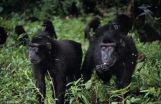(Press-News.org) CORVALLIS, Ore. – The massive Tohoku, Japan, earthquake in 2011 and Sumatra-Andaman superquake in 2004 stunned scientists because neither region was thought to be capable of producing a megathrust earthquake with a magnitude exceeding 8.4.
Now earthquake scientists are going back to the proverbial drawing board and admitting that existing predictive models looking at maximum earthquake size are no longer valid.
In a new analysis published in the journal Seismological Research Letters, a team of scientists led by Oregon State University's Chris Goldfinger describes how past global estimates of earthquake potential were constrained by short historical records and even shorter instrumental records. To gain a better appreciation for earthquake potential, he says, scientists need to investigate longer paleoseismic records.
"Once you start examining the paleoseismic and geodetic records, it becomes apparent that there had been the kind of long-term plate deformation required by a giant earthquake such as the one that struck Japan in 2011," Goldfinger said. "Paleoseismic work has confirmed several likely predecessors to Tohoku, at about 1,000-year intervals."
The researchers also identified long-term "supercycles" of energy within plate boundary faults, which appear to store this energy like a battery for many thousands of years before yielding a giant earthquake and releasing the pressure. At the same time, smaller earthquakes occur that do not dissipate to any great extent the energy stored within the plates.
The newly published analysis acknowledges that scientists historically may have underestimated the number of regions capable of producing major earthquakes on a scale of Tohoku.
"Since the 1970s, scientists have divided the world into plate boundaries that can generate 9.0 earthquakes versus those that cannot," said Goldfinger, a professor in OSU's College of Earth, Ocean, and Atmospheric Sciences. "Those models were already being called into question when Sumatra drove one stake through their heart, and Tohoku drove the second one.
"Now we have no models that work," he added, "and we may not have for decades. We have to assume, however, that the potential for 9.0 subduction zone earthquakes is much more widespread than originally thought."
Both Tohoku and Sumatra were written off in the textbooks as not having the potential for a major earthquake, Goldfinger pointed out.
"Their plate age was too old, and they didn't have a really large earthquake in their recent history," Goldfinger said. "In fact, if you look at a northern Japan seismic risk map from several years ago, it looks quite benign – but this was an artifact of recent statistics."
Paleoseismic evidence of subduction zone earthquakes is not yet plentiful in most cases, so little is known about the long-term earthquake potential of most major faults. Scientists can determine whether a fault has ruptured in the past – when and to what extent – but they cannot easily estimate how big a specific earthquake might have been. Most, Goldfinger says, fall into ranges – say, 8.4 to 8.7.
Nevertheless, that type of evidence can be more telling than historical records because it may take many thousands of years to capture the full range of earthquake behavior.
In their analysis, the researchers point to several subduction zone areas that previously had been discounted as potential 9.0 earthquake producers – but may be due for reconsideration. These include central Chile, Peru, New Zealand, the Kuriles fault between Japan and Russia, the western Aleutian Islands, the Philippines, Java, the Antilles Islands and Makran, Pakistan/Iran.
Onshore faults such as the Himalayan Front may also be hiding outsized earthquakes, the researchers add. Their work was supported by the National Science Foundation.
Goldfinger, who directs the Active Tectonics and Seafloor Mapping Laboratory at Oregon State, is a leading expert on the Cascadia Subduction Zone off the Pacific Northwest coast of North America. His comparative studies have taken him to the Indian Ocean, Japan and Chile, and in 2007, he led the first American research ship into Sumatra waters in nearly 30 years to study similarities between the Indian Ocean subduction zone and Cascadia.
Paleoseismic evidence abounds in the Cascadia Subduction Zone, Goldfinger pointed out. When a major offshore earthquake occurs, the disturbance causes mud and sand to begin streaming down the continental margins and into the undersea canyons. Coarse sediments called turbidites run out onto the abyssal plain; these sediments stand out distinctly from the fine particulate matter that accumulates on a regular basis between major tectonic events.
By dating the fine particles through carbon-14 analysis and other methods, Goldfinger and colleagues can estimate with a great deal of accuracy when major earthquakes have occurred. Over the past 10,000 years, there have been 19 earthquakes that extended along most of the Cascadia Subduction Zone margin, stretching from southern Vancouver Island to the Oregon-California border.
"These would typically be of a magnitude from about 8.7 to 9.2 – really huge earthquakes," Goldfinger said. "We've also determined that there have been 22 additional earthquakes that involved just the southern end of the fault. We are assuming that these are slightly smaller – more like 8.0 – but not necessarily. They were still very large earthquakes that if they happened today could have a devastating impact."
###
Other researchers on the analysis include Yasutaka Ikeda of University of Tokyo, Robert S. Yeats of Oregon State University, and Junjie Ren, of the Chinese Seismological Bureau. END
Scientists underestimated potential for Tohoku quake. Now what?
2013-01-23
ELSE PRESS RELEASES FROM THIS DATE:
Putting the squeeze on cells
2013-01-23
CAMBRIDGE, Mass. — Living cells are surrounded by a membrane that tightly regulates what gets in and out of the cell. This barrier is necessary for cells to control their internal environment, but it makes it more difficult for scientists to deliver large molecules such as nanoparticles for imaging, or proteins that can reprogram them into pluripotent stem cells.
Researchers from MIT have now found a safe and efficient way to get large molecules through the cell membrane, by squeezing the cells through a narrow constriction that opens up tiny, temporary holes in the membrane. ...
Panel recommends changing name of common disorder in women
2013-01-23
An independent panel convened by the National Institutes of Health has concluded that the name of a common hormone disorder in women, polycystic ovary syndrome (PCOS), causes confusion and is a barrier to research progress and effective patient care. The current name focuses on a criterion — ovarian cysts — which is neither necessary nor sufficient to diagnose the syndrome. In a report released today, the panel recommended assigning a new name that more accurately reflects the disorder.
"The name PCOS is a distraction that impedes progress. It is time to assign a name ...
Better outlook for dwindling black macaque population in Indonesia
2013-01-23
Since at least the 1970s, the population of critically endangered Sulawesi black macaques living in an Indonesian nature reserve has been dropping. But a new study by researchers at the University of Washington and in Indonesia shows that the population has stabilized over the past decade.
The findings, published in the January issue of the American Journal of Primatology, are from the longest ongoing survey of Macaca nigra and are among the first evidence that the monkeys may be in better shape.
"Fifteen years ago it looked like this macaque population would continue ...
Treatment targeting PI3K may delay resistance to anti-HER2 therapy in breast cancer patients
2013-01-23
PHILADELPHIA — Patients with HER2-positive breast cancer being treated with anti-HER2 therapy may be able to prevent or delay resistance to the therapy with the addition of a phosphatidylinositol-3 kinase inhibitor to their treatment regimens.
The data, published in Cancer Research, a journal of the American Association for Cancer Research, indicated that failure of the anti-HER2 antibody trastuzumab to block HER2 from activating the phosphatidylinositol-3 kinase (PI3K) signaling pathway can lead to resistance to treatment. Therefore, dual simultaneous inhibition of ...
Global plant diversity hinges on local battles against invasive species
2013-01-23
In Missouri forests, dense thickets of invasive honeysuckle decrease the light available to other plants, hog the attention of pollinators and offer nutrient-stingy berries to migrating birds. They also release toxins that decrease the germination of nearby native plants. Why, then, do studies of invasive species come to different conclusions about their effects and lead some organizations to suggest we accept their presence?
Biologists Kristin Powell, Tiffany Knight and Jon Chase of Washington University in St. Louis have found an answer.
Most studies of the effects ...
More efficient way to make popular prescription medication
2013-01-23
In a demonstration of the power of green chemistry, scientists are reporting development of a new and more efficient process for making one of the most costly and widely used medications for severe mental illness. Described in a report in the journal ACS Sustainable Chemistry & Engineering, it produces larger amounts of the medication than the existing commercial process while reducing the use of solvents and other potentially toxic substances.
Vijayavitthal T. Mathad and colleagues point out that paliperidone, marketed under the brand name Invega, is one of a new generation ...
Caloric restriction has a protective effect on chromosomes
2013-01-23
One of the indicators of a cell's health is the state of its DNA and containers—the chromosomes—so when these fuse together or suffer anomalies, they can become the source of illnesses like cancer and/or ageing processes.
According to a study carried out by a team led by María Blasco, the director of the Spanish National Cancer Research Centre (CNIO) and head of the Telomeres and Telomerase Group, a sustained lowering of food intake over time results in an increase of telomere length—the ends of chromosomes—in adult mice, which has a protective effect on the DNA and genetic ...
Products That Make a Difference: Discover MaxiAids' 2013/14 Catalog
2013-01-23
MaxiAids Products for Independent Living (www.MaxiAids.com) has released their 2013/14 Catalog. Commonly accepted as the 'Reference Guide of the Industry,' the MaxiAids Catalog contains the largest available assortment of items that support active, healthy and independent lives.
The most viewed catalog in the industry, it has thousands of budget-friendly assistive items for all age groups, no matter what their special need is. See more clearly with magnified, talking or large print daily living items such as talking watches and large numbered clocks! Never oversleep ...
Lower drinking ages can have an impact on later drinking patterns
2013-01-23
Lower minimum legal drinking age (MLDA) laws have been associated with short-term effects such as a greater number of traffic fatalities and teen suicides. A new study has investigated the long-term and persistent linkages between permissive MLDA laws and specific drinking behaviors such as average alcohol consumption, frequency of drinking, patterns of binge drinking, and moderate drinking. Findings support an association with problematic drinking behaviors that persist into later adulthood, such as more frequent binge episodes.
Results will be published in the March ...
Binge drinking can dramatically amplify damage to the liver
2013-01-23
Alcoholic liver disease (ALD) is characterized by a fatty liver, hepatitis, fibrosis, and cirrhosis. Binge drinking is on the rise worldwide, and is particularly common in the U.S. A review of studies addressing the effects of binge drinking on the liver underscores the complex interactions among various immune, signaling pathways, epigenetic, and metabolic responses of the liver to binge drinking.
Results will be published in the April 2013 issue of Alcoholism: Clinical & Experimental Research and are currently available at Early View.
"The liver is the main metabolic ...


